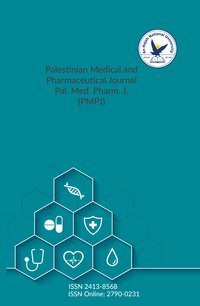Inhibitory Effect of Meropenem Antibiotic on the Activity of Glutathione-S-Transferases
Authors:
Article info
2024-07-05
2024-08-14
2024-08-16
107 - 112
Keywords
- -S-transferase;
- enzyme
- antibiotic;
- inhibition
- Glutathione
- Meropenem
Abstract
The following experiment investigated the effect of meropenem antibiotic on the activity of glutathione-S-transferase (GST) isoenzymes. This effect was estimated spectrophotometrically at different concentrations of meropenem using 1-chloro-2,4-dinitrobenzene (CDNB) as a substrate. The obtained results revealed that meropenem antibiotic demonstrated an inhibitory effect on GST activity at low tested concentrations (0.25, 0.5, 1 and 2.5 mM) that resulted in 30.5, 39.4, 45.1, and 100% inhibition, respectively. Also, results provided that the meropenem concentration required to reduce the GST activity to half equal to 1.266 mM. After applying the Line weaver-Burk blot and equation, it was noted that both Km and Vmax values decreased in the presence of meropenem, indicating uncompetitive inhibition. In conclusion, meropenem antibiotic is a potential inhibitor for GST. Therefore, it will be crucial to consider the metabolic defense systems when selecting the dosages of this antibiotic to be utilized for the treatment of infections.
Inhibitory Effect of Meropenem Antibiotic on the Activity of Glutathione-S-Transferases
المؤلفون:
معلومات المقال
2024-07-05
2024-08-14
2024-08-16
107 - 112
الكلمات الإفتتاحية
- -S-transferase;
- enzyme
- antibiotic;
- inhibition
- Glutathione
- Meropenem
الملخص
The following experiment investigated the effect of meropenem antibiotic on the activity of glutathione-S-transferase (GST) isoenzymes. This effect was estimated spectrophotometrically at different concentrations of meropenem using 1-chloro-2,4-dinitrobenzene (CDNB) as a substrate. The obtained results revealed that meropenem antibiotic demonstrated an inhibitory effect on GST activity at low tested concentrations (0.25, 0.5, 1 and 2.5 mM) that resulted in 30.5, 39.4, 45.1, and 100% inhibition, respectively. Also, results provided that the meropenem concentration required to reduce the GST activity to half equal to 1.266 mM. After applying the Line weaver-Burk blot and equation, it was noted that both Km and Vmax values decreased in the presence of meropenem, indicating uncompetitive inhibition. In conclusion, meropenem antibiotic is a potential inhibitor for GST. Therefore, it will be crucial to consider the metabolic defense systems when selecting the dosages of this antibiotic to be utilized for the treatment of infections.
Since 2022
Cite Score (Scopus): 0.8
Time to First Decision: 3 Days
Submission to Acceptance: 45 Days
Acceptance to Publication: 64 Days
Acceptance Rate: 17%
Why should you
Publish With Us?
An-Najah National University
Nablus, Palestine
Nablus, Palestine
- P.O. Box
- 7, 707
- Fax
- (970)(9)2345982
- Tel.
- (970)(9)2345560
- (970)(9)2345113/5/6/7-Ext. 2628
- [email protected]
- EIC
- Prof. Waleed Sweileh
The Palestinian Medical and Pharmaceutical Journal (Pal. Med. Pharm. J.) © 2024 by An-Najah University, Nablus, Palestine is licensed under CC BY-NC 4.0
News and Views
